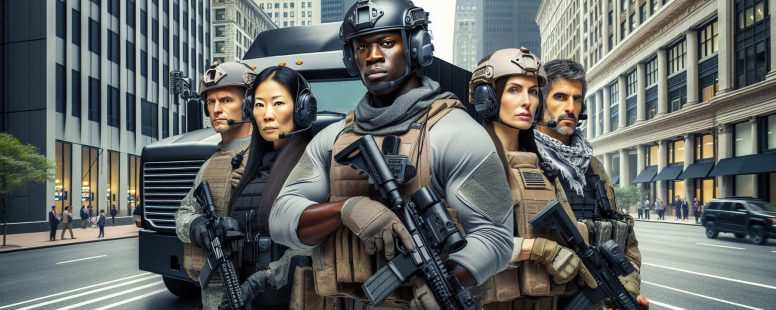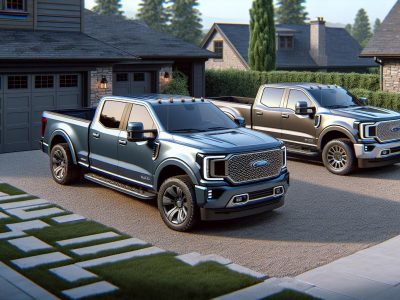Difference Between Squad and Truck: Choosing the Right Approach for City Challenges
Imagine exploring a bustling cityscape where every move depends on your choice of gear. You might find yourself relying on a squad—a tight-knit group moving with coordinated precision—or opting for the raw power of a truck to haul through challenges. Understanding the distinct roles and advantages of each can transform how you approach your tasks. Whether you’re building a team for success or seeking the strength to transport your ambitions, recognizing the difference between a squad and a truck empowers your decisions. Immerse to uncover the unique benefits each offers and discover which one aligns perfectly with your needs.
Overview of Squad and Truck
Understanding the distinction between a squad and a truck is essential for making informed decisions in various contexts. Each serves unique purposes, catering to different needs and objectives.
Definition of Squad
A squad is a cohesive group meticulously organized to achieve specific objectives through collaboration and strategic planning. It embodies teamwork, adaptability, and precision, often employed in environments that demand coordinated efforts and dynamic problem-solving.
Definition of Truck
A truck is a powerful vehicle designed for transporting goods, equipment, or materials with efficiency and reliability. It features substantial capacity and durability, making it indispensable for tasks that require moving large volumes or heavy loads across diverse terrains.
Design and Features
Structural Differences
Squads and trucks possess fundamentally different structures designed to meet their specific purposes. A squad typically consists of 5-10 members, each with designated roles that enhance teamwork and efficiency. This compact arrangement facilitates quick maneuvering and streamlined communication, essential for coordinated efforts in dynamic environments. Conversely, trucks are built with a sturdy framework, often made from high-grade steel, to support substantial weights and withstand harsh conditions. The design includes a robust chassis, reinforced suspension, and a durable body, enabling trucks to transport heavy loads and navigate various terrains reliably.
Technological Specifications
The technological features of squads and trucks highlight their distinct functionalities. Squads are equipped with advanced communication tools such as encrypted radios and GPS devices, ensuring seamless coordination and real-time information sharing. Also, members often use specialized gear like night vision goggles, tactical helmets, and body armor to enhance operational effectiveness and safety. In contrast, trucks incorporate powerful engines, typically ranging from 200 to 500 horsepower, providing the necessary strength for towing and hauling. Modern trucks also feature state-of-the-art navigation systems, fuel-efficient drivetrains, and safety technologies like anti-lock brakes and traction control, optimizing performance and ensuring reliable transportation under various conditions.
Performance Comparison
When evaluating the difference between squad and truck, performance metrics become pivotal. Let’s investigate into their speed and load capacities.
Speed and Agility
A squad moves with the fluid grace of a well-choreographed dance, exploring urban mazes with swift precision. Its agility allows for rapid adjustments, adapting to obstacles with ease. In contrast, a truck strides like a steadfast river, powerful yet less nimble. Its speed, while impressive on straight paths, falters amidst tight corners and congested streets, rendering it less adaptable in dynamic environments.
Load Capacity
The load capacity of a truck stands as a colossus amidst its peers, bearing heavy burdens with unwavering strength. It effortlessly transports substantial volumes, making it indispensable for large-scale operations. Conversely, a squad, though limited in physical load, compensates with strategic prowess and versatility. Its ability to handle diverse tasks with minimal resources showcases a different kind of strength, one that physical load cannot measure.
Understanding the difference between squad and truck, their performance aspects determine which to choose based on your specific needs.
Use Cases
Choosing between a squad and a truck depends on your specific needs and objectives. Each option serves distinct purposes across various industries and scenarios.
Military Applications
In military operations, squads provide tactical advantages through coordinated teamwork and strategic maneuvers. They enable precise execution of missions, adaptable responses to dynamic environments, and effective communication among members. Conversely, trucks support logistical operations by transporting equipment, supplies, and personnel efficiently. Their ability to carry heavy loads ensures sustained resource availability, crucial for prolonged missions and battlefield support.
Commercial Applications
In the commercial sector, squads enhance project management and team collaboration, driving innovation and productivity in business environments. They help specialized roles, allowing for focused expertise and streamlined workflows. Trucks play a vital role in supply chain management by ensuring the timely delivery of goods and materials. Their capacity to handle large volumes supports retail distribution, construction projects, and manufacturing processes, maintaining operational continuity and meeting consumer demands.
Cost Analysis
Evaluating the financial implications of choosing between a squad and a truck is essential for well-informed choice-making. This section breaks down the initial investments and ongoing maintenance costs associated with each option.
Initial Investment
The startup costs for a squad and a truck vary significantly based on scale and requirements.
- Squad:
- Recruitment and Training: Approximately $50,000 annually for hiring and skill development.
- Equipment: Averaging $20,000 for specialized tools and technology.
- Truck:
- Purchase Price: Ranges from $30,000 for a standard model to $100,000 for specialized vehicles.
- Licensing and Permits: Estimated $5,000 depending on regional regulations.
| Cost Category | Squad ($) | Truck ($) |
|---|---|---|
| Recruitment and Training | 50,000 | N/A |
| Equipment | 20,000 | N/A |
| Purchase Price | N/A | 30,000 – 100,000 |
| Licensing and Permits | N/A | 5,000 |
Maintenance Costs
Ongoing expenses ensure the longevity and efficiency of squads and trucks.
- Squad:
- Operational Expenses: Around $15,000 annually for supplies and communication tools.
- Training Updates: Approximately $10,000 each year to keep skills current.
- Truck:
- Fuel and Utilities: Estimated at $10,000 annually, varying with usage.
- Repairs and Servicing: Averaging $7,000 per year to maintain vehicle performance.
| Maintenance Category | Squad ($) | Truck ($) |
|---|---|---|
| Operational Expenses | 15,000 | N/A |
| Training Updates | 10,000 | N/A |
| Fuel and Utilities | N/A | 10,000 |
| Repairs and Servicing | N/A | 7,000 |
By analyzing both initial and maintenance costs, you can determine which option aligns best with your budget and operational needs.
Conclusion
Choosing between a squad and a truck depends on your specific needs and goals. If you value teamwork and strategic flexibility your approach benefits from a coordinated squad. On the other hand if your priority is moving heavy loads efficiently a truck offers the strength and capacity you require. Assess your objectives consider the advantages each option provides and make a decision that best aligns with your operational needs and budget. By understanding the unique strengths of squads and trucks you can navigate challenges effectively and drive your projects forward with confidence.
- Understanding the Difference Between Futures and Options: A Complete Guide - October 28, 2025
- Understanding the Difference Between Wages and Salary: Key Pros and Cons Explained - October 28, 2025
- Zoloft vs. Lexapro: Understanding Key Differences in Treatment and Side Effects - October 28, 2025







